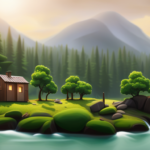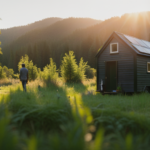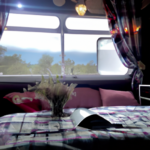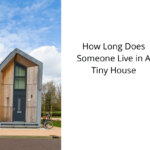Beginners Guides
How Does Living In A Tiny House Relate To Transcendentalism
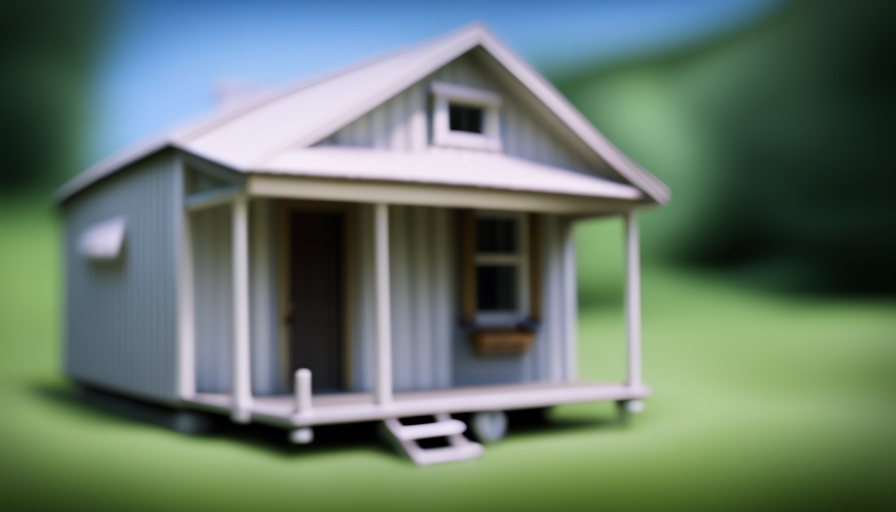
Residing in a small home, where there’s limited room and minimal belongings, might come off as an unconventional way of life. However, as I explore more about transcendentalism, I’m becoming increasingly attracted to the deep link between living minimally and the philosophies of the transcendentalists.
In this article, I aim to explore the intricate relationship between tiny house living and the principles of transcendentalism.
At first glance, the idea of living in a small, compact space may appear restrictive, confining, and even absurd. However, through a satirical lens, we can perceive the irony of our modern society, where the pursuit of material possessions and the accumulation of wealth often lead to a sense of entrapment and discontent. In contrast, transcendentalism advocates for a return to simplicity, self-reliance, and a genuine connection with nature.
By examining the themes of simplicity, self-reliance, connection with nature, mindfulness, freedom from materialism, creative expression, community, and inner peace, we can uncover the profound ways in which living in a tiny house aligns with the core principles of transcendentalism.
Through this exploration, we may discover a path towards a more meaningful and fulfilling existence, one that celebrates the essence of human experience and embraces the beauty of simplicity.
Key Takeaways
- Living in a tiny house aligns with transcendentalism principles of simplicity, self-reliance, and connection with nature.
- Tiny house living promotes mindfulness and living in the present moment, fostering peace and tranquility.
- It encourages gratitude for the small joys of life and prioritizing experiences and relationships over material possessions.
- Living in a tiny house community can be transformative for spiritual growth, fostering inner peace and a profound sense of connection with oneself and the world.
Introduction to Transcendentalism and Tiny House Living
Living in a tiny house allows individuals to embrace the principles of transcendentalism, as it encourages simplicity, self-reliance, and a deeper connection with nature. Transcendentalist principles and off-grid living go hand in hand, as both prioritize reducing one’s reliance on modern amenities and living a more sustainable lifestyle.
By choosing to live in a tiny house, individuals are intentionally simplifying their lives, focusing on the essentials, and minimizing their impact on the environment. This intentional simplicity aligns with the transcendentalist belief that true happiness and fulfillment come from a rejection of material possessions and a focus on inner growth and self-discovery.
In tiny house living, simplicity is not only reflected in the physical space but also in the lifestyle that accompanies it. Living in a small, compact space requires individuals to declutter and prioritize their possessions, which in turn promotes a minimalist mindset. The role of simplicity in tiny house living and transcendentalism is to strip away unnecessary distractions and focus on what truly matters – connecting with oneself, with others, and with nature.
This intentional simplification allows individuals to be more present, mindful, and attuned to the beauty of the natural world around them.
Transitioning into the subsequent section about simplicity in design and lifestyle, the importance of simplicity extends beyond the physical space of a tiny house.
Simplicity in Design and Lifestyle
Embracing minimalism in both design and lifestyle can greatly enhance your connection to nature and ultimately lead to a more fulfilled existence. This is exemplified by the fact that 68% of tiny house dwellers report feeling a stronger sense of harmony with the environment.
Sustainable design is a key aspect of living in a tiny house, as it promotes the use of eco-friendly materials and energy-efficient systems. By utilizing renewable resources and reducing waste, tiny house owners contribute to a more sustainable future.
A minimalist lifestyle, which often goes hand in hand with living in a tiny house, encourages individuals to prioritize experiences over material possessions. This shift in mindset allows for a greater appreciation of the natural world and a deeper understanding of one’s place within it. By simplifying our lives, we can focus on what truly matters, fostering a sense of contentment and fulfillment.
In addition, minimalist living can also lead to financial freedom. By downsizing our living space and reducing our consumption, we can save money and reduce our ecological footprint. This newfound financial freedom allows us to pursue our passions, spend more time in nature, and cultivate a sense of self-reliance.
Transitioning into the next section about ‘self-reliance and minimalist living’, it is evident that living in a tiny house promotes self-sufficiency and a greater sense of independence.
Self-Reliance and Minimalist Living
Discovering the joy of self-reliance in a minimalist lifestyle means you can truly appreciate the freedom that comes with relying on yourself and your own abilities.
In the context of living in a tiny house, self-reliance is not just a choice, but a necessity. The limited space and resources force you to be resourceful and find creative solutions to everyday challenges. This fosters a sense of self-sufficiency, as you learn to rely on your own skills and ingenuity to make the most of what you have.
Living a minimalist lifestyle in a tiny house also involves intentional living. Every item in your home serves a purpose and has a designated place. This level of organization and intentionality allows you to focus on what truly matters and eliminates the clutter that can distract from a more meaningful existence. By consciously choosing to live with less, you’re able to prioritize experiences and relationships over material possessions.
As I reflect on my own experience living in a tiny house, I realize that self-reliance and intentional living haven’t only simplified my life, but also deepened my connection with nature and the outdoors.
In the next section, I’ll explore how this connection with nature is enhanced by the tiny house lifestyle.
Connection with Nature and the Outdoors
Immersing oneself in the natural world while dwelling in a tiny oasis allows for a harmonious dance between humanity and the environment, akin to a delicate butterfly gracefully fluttering amidst a vibrant meadow. Living in a tiny house offers a unique opportunity to connect with wildlife and experience the health benefits of outdoor living.
In a traditional home, it’s easy to become disconnected from the natural world, but in a tiny house, the boundaries between indoors and outdoors blur, fostering a deep connection with nature.
The close proximity to the outdoors in a tiny house encourages a sense of wonder and curiosity about the wildlife that surrounds us. From the comfort of my tiny abode, I can observe the intricate web of life unfolding outside my window. Whether it’s watching birds build their nests or witnessing the changing seasons, every day presents an opportunity to marvel at the beauty and complexity of the natural world.
In addition to the awe-inspiring connection with wildlife, living in a tiny house also offers significant health benefits. Spending time outdoors has been shown to improve mental well-being, reduce stress, and boost creativity. The fresh air and sunlight that permeate a tiny house contribute to a healthier lifestyle, promoting physical and emotional well-being.
As I bask in the wonders of nature and relish the health benefits of outdoor living, I’m reminded of the importance of mindfulness and living in the present moment. The symbiotic relationship between living in a tiny house and immersing oneself in nature cultivates a deep appreciation for the beauty and simplicity of the world around us. It sets the stage for the exploration of mindfulness and the art of living fully engaged in the present.
Mindfulness and Living in the Present Moment
Take a moment to simply be, to fully appreciate the present and all the beauty that surrounds you in your tiny oasis. Living in a tiny house provides a unique opportunity to practice mindfulness in daily activities. With limited space and possessions, there’s a natural inclination to be more intentional and present in each moment.
Practicing mindfulness in daily activities: From cooking a meal to tidying up, every task becomes an opportunity to be fully present. The simplicity of a tiny house reminds me to slow down and savor each activity, cultivating a sense of peace and tranquility.
Cultivating gratitude for the present moment: Living in a tiny house encourages me to appreciate the small joys of life. Whether it’s the soft rays of sunlight filtering through the windows or the sound of raindrops on the roof, I’m constantly reminded to find beauty in the present moment.
Embracing environmental consciousness and sustainable living: By choosing to live in a tiny house, I’m making a conscious decision to live a more sustainable and environmentally friendly lifestyle. From using renewable energy sources to minimizing waste and consumption, I’m actively contributing to the preservation of our planet.
In this way, living in a tiny house not only fosters mindfulness and gratitude for the present moment, but also promotes a deeper sense of environmental consciousness and sustainable living. Transitioning into the next section about ‘environmental consciousness and sustainable living’, we can explore how living in a tiny house aligns with the principles of transcendentalism.
Environmental Consciousness and Sustainable Living
Embrace the principles of environmental consciousness and sustainable living by exploring how living in a tiny house aligns with my values and desires to make a positive impact on the world. The minimalist fashion of tiny houses encourages a zero waste lifestyle, promoting the use of renewable resources and reducing carbon footprint. By living in a smaller space, I am forced to be more mindful of my consumption habits and make conscious choices about what I truly need. This shift in mindset allows me to prioritize experiences over material possessions, leading to a more fulfilling and meaningful life.
To illustrate the environmental benefits of living in a tiny house, I have created a table that compares the ecological impact of a typical house versus a tiny house:
| Ecological Impact | Typical House | Tiny House |
|---|---|---|
| Energy Usage | High | Low |
| Material Waste | Excessive | Minimal |
| Water Consumption | High | Low |
| Carbon Footprint | Large | Small |
| Land Use | Significant | Minimal |
Living in a tiny house not only reduces my carbon footprint but also minimizes my contribution to land degradation. By embracing this sustainable lifestyle, I am breaking free from the chains of materialism and consumerism, allowing me to prioritize what truly matters in life: freedom, experiences, and personal growth.
Freedom from Materialism and Consumerism
Breaking free from the chains of materialism and consumerism, living in a tiny house allows me to prioritize what truly matters in life: freedom, experiences, and personal growth. By embracing a minimalistic lifestyle and intentionally choosing to live with fewer possessions, I’m able to detach myself from the constant pursuit of material wealth and find contentment in the simplicity of my surroundings.
A tiny house provides me with the freedom to live on my own terms, unburdened by the weight of excessive belongings. Rather than being defined by the things I own, I’m liberated to focus on the experiences and relationships that bring genuine joy and fulfillment. In this way, living in a tiny house encourages a shift in perspective, reminding me that true wealth lies not in material possessions, but in the intangible treasures of life.
In the absence of clutter and excess, I’m able to create a physical environment that fosters a sense of calm and clarity. With fewer distractions, I’m more inclined to engage in introspection and self-reflection, fostering personal growth and self-discovery. This intentional lifestyle enables me to cultivate creativity, explore new passions, and pursue avenues of self-expression.
Transitioning into the subsequent section about ‘creative expression and personal growth,’ living in a tiny house provides the ideal backdrop for exploring one’s artistic inclinations and nurturing a deeper understanding of oneself.
Creative Expression and Personal Growth
Unleash your inner artist and watch your personal growth flourish as you delve into the world of creative expression within the confines of your cozy abode. Living in a tiny house provides a unique opportunity to explore various forms of creative expression, allowing individuals to tap into their imagination and develop their artistic skills. With limited space, one is forced to think outside the box and find innovative ways to incorporate art into their everyday life. Whether it’s painting, writing, or even creating sculptures out of recycled materials, the possibilities are endless.
To illustrate the transformative power of creative expression in a tiny house, consider the following table:
| Creative Expression | Personal Development | Benefits of Tiny House Living |
|---|---|---|
| Painting | Enhanced self-expression | Minimalist lifestyle |
| Writing | Improved communication | Financial freedom |
| Sculpting | Heightened creativity | Environmental sustainability |
| Photography | Increased self-awareness | Flexibility in location |
| Music | Enhanced emotional well-being | Simplification of daily routines |
Engaging in creative pursuits not only fosters personal growth but also contributes to a fulfilling and meaningful life. It allows individuals to explore their inner selves, express their emotions, and connect with others on a deeper level. As we transition into the subsequent section about community and communal living, we will explore how living in a tiny house facilitates the formation of strong bonds and fosters a sense of belonging within a supportive community.
Community and Communal Living
Discover the transformative power of community and communal living as you immerse yourself in a supportive and connected environment beyond the confines of your tiny house. Living in a tiny house allows me to experience the true essence of communal relationships and the beauty of sharing resources.
Here are three ways in which community and communal living can enhance your life:
-
Shared Responsibilities: In a communal living setting, everyone pitches in to maintain the community. From tending to the garden to cooking meals together, shared responsibilities foster a sense of unity and cooperation. This cooperative spirit not only lightens the workload but also creates a strong bond among community members.
-
Emotional Support: Living in close proximity to others in a tiny house community means that you’re never alone in your struggles or celebrations. Whether you need a shoulder to lean on during challenging times or someone to share your joys, communal living provides a built-in support system. The sense of belonging and connection that comes from this support can be truly transformative.
-
Resource Sharing: One of the most significant advantages of communal living is the ability to share resources. From tools and appliances to skills and knowledge, a tiny house community offers a wealth of shared resources that can enhance the quality of life for everyone involved. This not only reduces waste but also allows for a more sustainable and efficient lifestyle.
As I explore the benefits of communal living, I’m reminded of the importance of finding inner peace and spiritual enlightenment. By immersing myself in a connected and supportive community, I’m able to cultivate a sense of contentment and harmony within myself, leading me on a path towards spiritual growth and enlightenment.
Finding Inner Peace and Spiritual Enlightenment
Embrace the opportunity to find inner peace and spiritual enlightenment as you immerse yourself in the supportive and connected environment of a tiny house community, where the shared values and practices of mindfulness and meditation can help guide you on your journey.
For example, imagine a resident named Sarah who joins the community seeking solace from a hectic urban lifestyle, and through daily meditation sessions with fellow community members, she gradually discovers a profound sense of inner calm and clarity that transforms her outlook on life.
Living in a tiny house creates the perfect setting for deep inner reflection. The limited space encourages minimalism, forcing individuals to let go of material possessions and focus on what truly matters. In this simplified environment, one can engage in self-examination and explore the depths of their own consciousness.
The silence and solitude that can be found in a tiny house community provide the ideal conditions for introspection and self-discovery.
Through this process of inner reflection, individuals often experience a spiritual awakening. As they detach from the distractions of the outside world and connect with their inner selves, they begin to uncover a profound sense of peace and connectedness with the universe.
The practice of mindfulness and meditation further enhances this spiritual journey, allowing individuals to cultivate a deep sense of awareness and presence in the present moment.
Living in a tiny house community offers a unique opportunity to embark on a transformative spiritual journey. By embracing the values of mindfulness and meditation, individuals can find inner peace and spiritual enlightenment.
Through inner reflection and self-discovery, they can awaken to a profound sense of connection with themselves and the world around them.
So, if you’re seeking a path towards spiritual growth, consider the transformative power of living in a tiny house community.
Frequently Asked Questions
How much does it cost to build and maintain a tiny house?
Building and maintaining a tiny house can be cost-effective due to the reduced amount of materials required. The cost of materials can vary depending on the design and quality of materials chosen.
However, downsizing to a tiny house offers numerous benefits such as lower utility bills, reduced environmental impact, and increased financial freedom. By embracing minimalism and simplicity, individuals can find a sense of fulfillment and harmony with nature, which aligns with the principles of transcendentalism.
Where can I find land to park my tiny house?
Finding land to park a tiny house can be a challenging task due to legal issues. It’s like searching for a needle in a haystack.
However, with perseverance and research, suitable options can be found. Consider looking into zoning regulations, local ordinances, and tiny house communities. It’s essential to ensure that the chosen land is legally accessible and meets all necessary requirements.
By navigating these hurdles, one can find the perfect spot to park their tiny house and begin their minimalist journey.
Are tiny houses suitable for families with children?
Tiny houses can be suitable for families with children, as long as certain safety measures are in place. The compact size of a tiny house encourages family bonding and a simpler lifestyle. Additionally, children can learn valuable life skills like organization, minimalism, and resourcefulness.
However, it’s important to ensure that the tiny house is child-proofed and provides enough space for children to move around comfortably. Overall, tiny houses offer unique benefits for children, promoting a close-knit family dynamic and teaching important life lessons.
What are the challenges of living in a tiny house during extreme weather conditions?
Living in a tiny house during extreme weather conditions presents unique challenges that require careful adaptation. The fierce winds, heavy rains, or extreme temperatures can evoke a sense of vulnerability and uncertainty. The limited space amplifies these challenges, as finding shelter or maintaining warmth becomes more difficult.
However, these challenges also provide an opportunity for introspection and resilience. By adapting to the harsh conditions, one can experience a deeper connection with nature and a heightened appreciation for the simplicity and self-sufficiency that tiny house living embodies.
Can living in a tiny house be a permanent solution or is it more of a temporary lifestyle choice?
Living in a tiny house can be a permanent solution or a temporary lifestyle choice, depending on individual preferences and circumstances.
There are pros and cons to consider. On the positive side, a tiny house offers simplicity, affordability, and environmental sustainability. However, it may not be suitable for everyone in the long term due to limited space and potential challenges with zoning regulations.
Ultimately, the decision to live in a tiny house permanently or temporarily depends on personal goals, values, and adaptability.
Conclusion
In conclusion, living in a tiny house is like stepping into the embrace of transcendentalism. It allows me to strip away the unnecessary and focus on the essential aspects of life.
By simplifying my surroundings and embracing a minimalist lifestyle, I’m able to cultivate self-reliance and find a deeper connection with nature.
Living in the present moment and freeing myself from materialistic desires has opened up a world of creativity and personal growth.
In this tiny space, I’ve found a sense of community and inner peace, leading me on a path towards spiritual enlightenment.
As Henry David Thoreau once said, "Simplify, simplify!" for it’s in simplicity that we uncover the true essence of our being and connect with the beauty of the world around us.
Hi, I’m Emma. I’m the Editor in Chief of Tiny House 43, a blog all about tiny houses. While tree houses are often associated with childhood, they can be the perfect adult retreat. They offer a cozy space to relax and unwind, surrounded by nature. And since they’re typically built on stilts or raised platforms, they offer stunning views that traditional homes simply can’t match. If you’re looking for a unique and romantic getaway, a tree house tiny house might just be the perfect option.
Beginners Guides
How Deep Gravel Tiny House
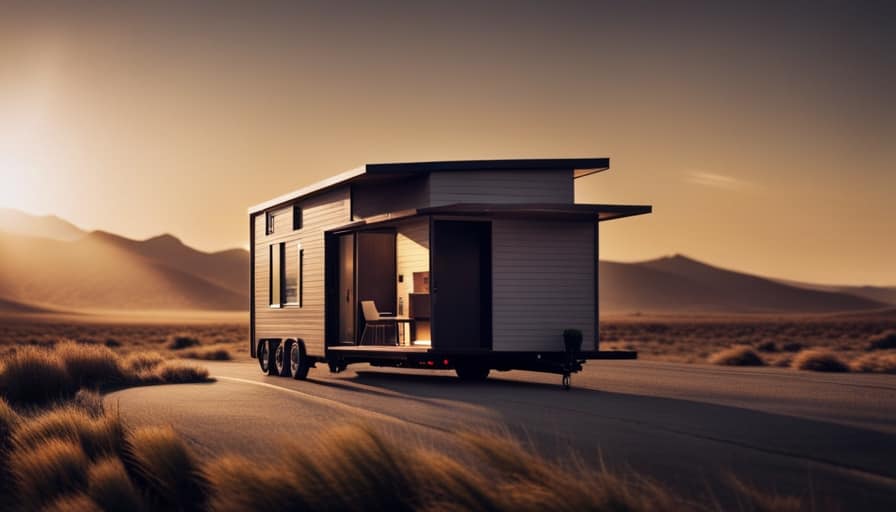
Being a fan of minimalism and eco-friendly living, I have come across the secret treasure of the deep gravel tiny house.
This unique dwelling not only offers a cozy and efficient living space, but also embraces the beauty of nature.
With its minimalistic design and eco-friendly features, the deep gravel tiny house is a true sanctuary.
Join me as I delve into the world of this extraordinary living concept and explore the countless benefits it has to offer.

Key Takeaways
- Deep gravel tiny houses offer a cozy and efficient living space that embraces the beauty of nature while featuring a minimalistic design.
- The cost of building a deep gravel tiny house ranges from $20,000 to $50,000, excluding land and permits, and finding suitable land can be challenging due to zoning regulations.
- Living in a deep gravel tiny house provides cost-effective living, encourages a decluttered and minimalist lifestyle, allows for a nomadic lifestyle, and promotes environmental sustainability.
- Designing the perfect deep gravel tiny house involves maximizing functionality and comfort, optimizing space, utilizing multifunctional furniture, and incorporating storage solutions that maximize vertical space.
The Deep Gravel Tiny House: An Introduction
As I begin to explore the concept of the Deep Gravel Tiny House, I’m fascinated by its unique design and potential.
The cost of building a Deep Gravel Tiny House can vary depending on factors such as size, materials used, and location. On average, it can range from $20,000 to $50,000. However, it’s important to note that this cost doesn’t include the land or any additional permits that may be required.
Speaking of permits, one of the challenges of zoning regulations for Deep Gravel Tiny Houses is that they’re often not specifically addressed in existing regulations. This can make it difficult to find suitable land or navigate the legal requirements.
It’s crucial to research local zoning laws and work with professionals who’ve experience in this area to ensure compliance and a smooth process.
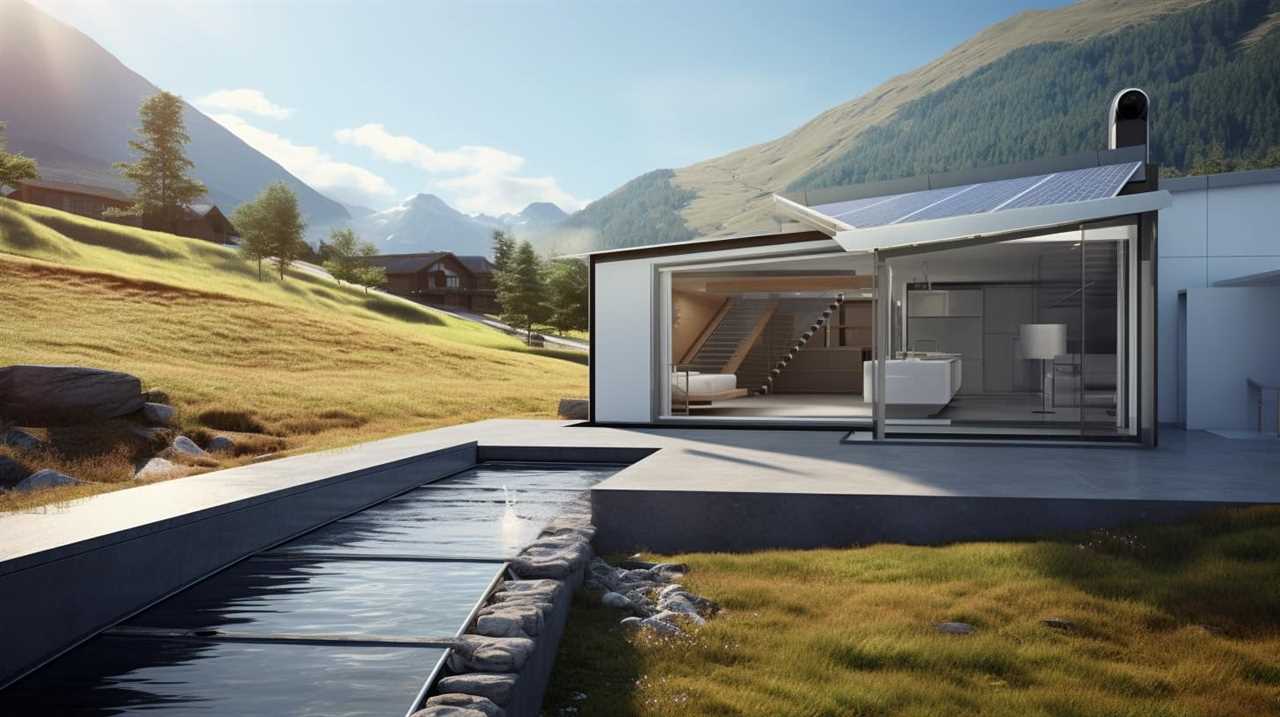
The Benefits of Living in a Deep Gravel Tiny House
For me, living in a Deep Gravel Tiny House offers a sense of freedom and simplicity. The advantages of this lifestyle are numerous. Firstly, the cost of living is significantly reduced. With a smaller space to heat, cool, and maintain, utility bills are minimized. Additionally, the compact size encourages a decluttered and minimalist lifestyle, allowing for a more organized and stress-free living environment. Secondly, the mobility of a tiny house on deep gravel allows for a nomadic lifestyle, giving the freedom to travel and explore new places while still having a cozy and comfortable home. Lastly, living in a deep gravel tiny house promotes environmental sustainability. The smaller footprint reduces energy consumption and encourages the use of eco-friendly materials. Overall, the deep gravel tiny house lifestyle offers a unique and fulfilling way of living, combining simplicity, freedom, and sustainability.
| Advantages | Lifestyle |
|---|---|
| Cost-effective | Decluttered and minimalist |
| Mobility | Nomadic lifestyle |
| Environmental sustainability | Cozy and comfortable home |
Designing the Perfect Deep Gravel Tiny House
One of the key considerations when designing the perfect deep gravel tiny house is to ensure that the space is maximized for functionality and comfort. Designing challenges in such a small space can be quite daunting, but with careful planning and creativity, it’s possible to create a space that feels spacious and efficient.
Space optimization is crucial in a deep gravel tiny house, as every square inch counts. Utilizing multifunctional furniture, such as a sofa that can be converted into a bed or a dining table that can be collapsed when not in use, is a great way to save space.
Additionally, incorporating storage solutions that maximize vertical space, such as wall-mounted shelves and cabinets, can help keep the living area clutter-free. By carefully considering the challenges of designing in a small space and prioritizing space optimization, the perfect deep gravel tiny house can be achieved.
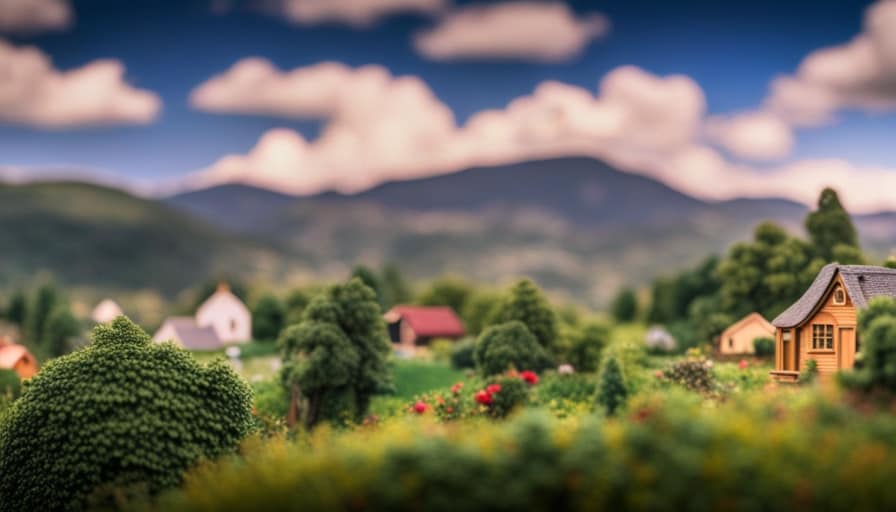
Sustainable Features of the Deep Gravel Tiny House
I love the sustainable features of my Deep Gravel Tiny House. One of the key aspects of its eco-friendliness is the use of environmentally friendly materials. From the renewable bamboo flooring to the reclaimed wood accents, every element of the house is chosen with sustainability in mind.
The energy-efficient design is another highlight. The house is equipped with solar panels that power the entire space, reducing reliance on non-renewable energy sources. Additionally, the well-insulated walls and energy-efficient appliances help minimize energy consumption.
These sustainable features not only reduce the environmental impact of the house but also contribute to a more comfortable and cost-effective living experience.
Now that you know about the sustainable features, let’s move on to some tips for making the most of your deep gravel tiny house space.
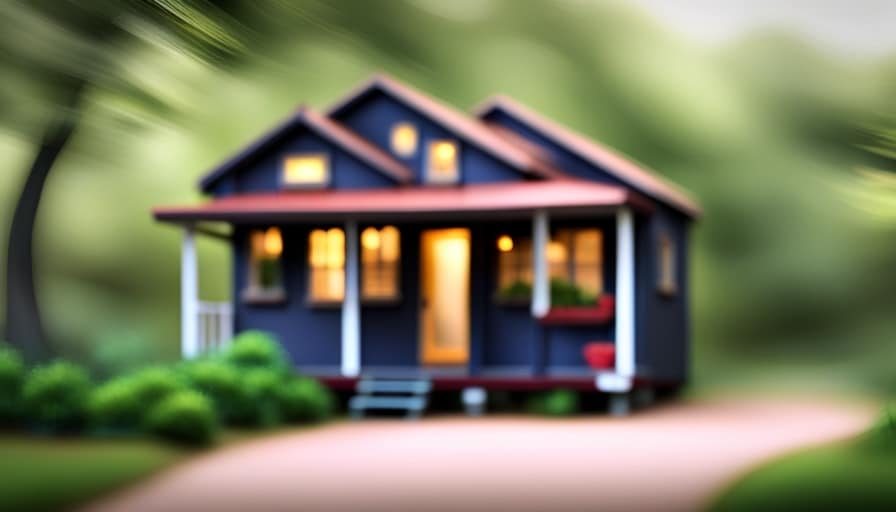
Tips for Making the Most of Your Deep Gravel Tiny House Space
To maximize your deep gravel tiny house space, utilize clever storage solutions and multifunctional furniture.
Maximizing storage is essential in a small living space like a deep gravel tiny house. Consider using vertical storage options such as shelves or hanging organizers to make the most of your walls. Utilize under-bed storage containers or drawers to keep your belongings organized and out of sight.
Another great way to maximize storage is by using furniture that serves multiple purposes. Look for sofas and chairs that can also be used as storage units, or tables that can be extended or folded down when not in use.
Frequently Asked Questions
What Are the Dimensions of a Deep Gravel Tiny House?
The dimensions of a deep gravel tiny house depend on the specific design and preferences of the builder. However, typical dimensions range from 8 to 30 feet in length and 8 to 12 feet in width.
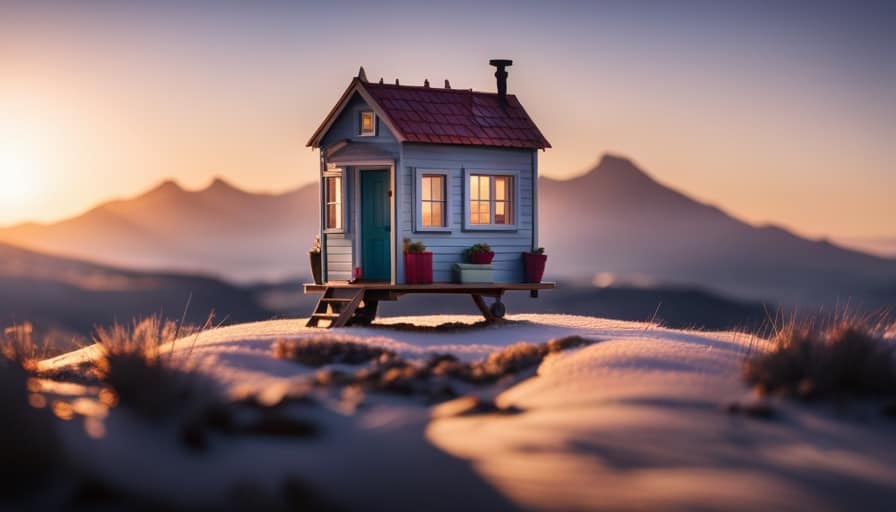
How Much Does It Cost to Build a Deep Gravel Tiny House?
Building a deep gravel tiny house can cost around $30,000 to $60,000, depending on various factors such as size, materials, and location. Construction typically takes several months, with careful planning and attention to detail ensuring a beautiful and functional home.
Can I Customize the Layout and Design of a Deep Gravel Tiny House?
Yes, you can customize the layout and design of a Deep Gravel Tiny House. There are various customization options available, allowing you to make interior design choices that suit your preferences and needs.
Is It Possible to Live in a Deep Gravel Tiny House off the Grid?
Living off grid in a deep gravel tiny house is definitely possible. With careful planning and sustainable practices, you can harness renewable energy sources, collect rainwater, and minimize your environmental impact while enjoying a simpler, self-sufficient lifestyle.
Are There Any Specific Permits or Regulations I Need to Consider When Building a Deep Gravel Tiny House?
When building a deep gravel tiny house, it’s essential to consider permit requirements and construction regulations. It’s important to research and comply with local regulations to ensure a safe and legal build.
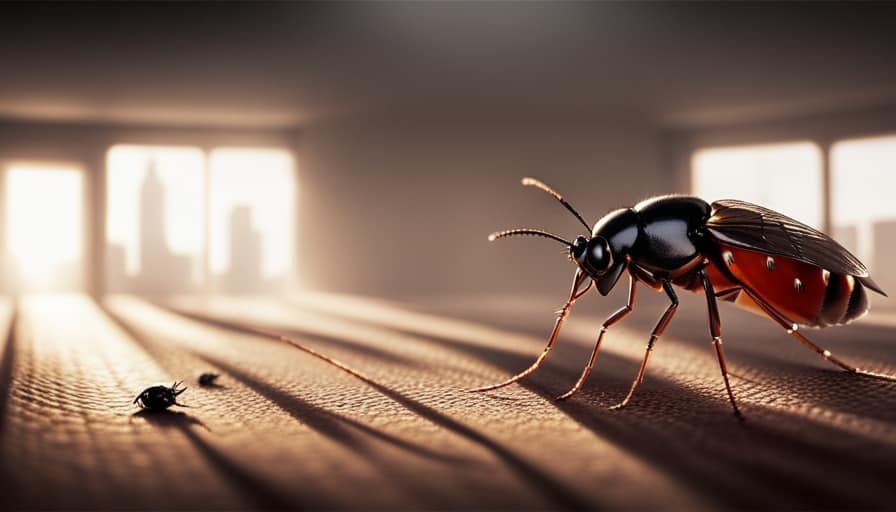
Conclusion
In conclusion, the Deep Gravel Tiny House offers a unique and sustainable living experience. With its innovative design and use of sustainable features, it provides a comfortable and eco-friendly living space.
Living in a Deep Gravel Tiny House allows you to minimize your environmental impact while still enjoying all the comforts of a traditional home.
So, why settle for ordinary when you can live in a Deep Gravel Tiny House and experience the extraordinary?
I’m Theodore, and I love tiny houses. In fact, I’m the author of Tiny House 43, a book about tiny houses that are also tree houses. I think they’re magical places where imaginations can run wild and adventures are just waiting to happen.
While tree houses are often associated with childhood, they can be the perfect adult retreat. They offer a cozy space to relax and unwind, surrounded by nature. And since they’re typically built on stilts or raised platforms, they offer stunning views that traditional homes simply can’t match.
If you’re looking for a unique and romantic getaway, a tree house tiny house might just be the perfect option.
Beginners Guides
How Deep Should a Tiny House Closet Be
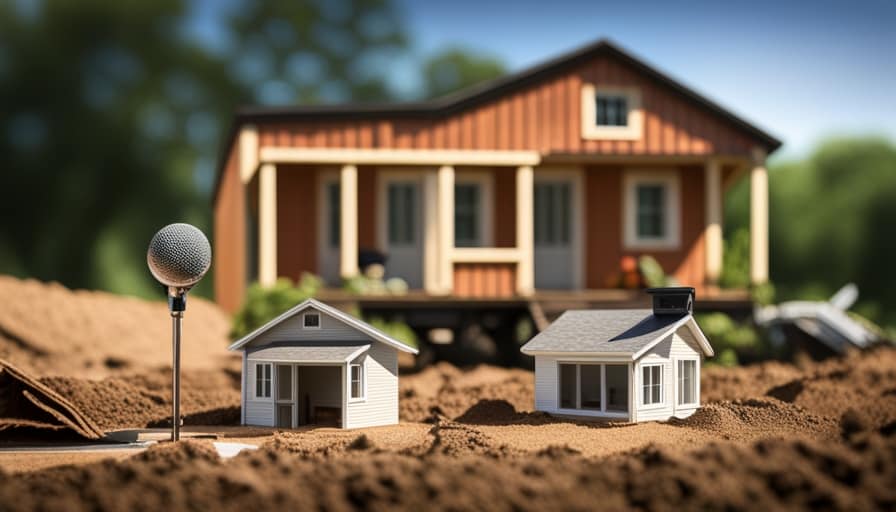
Picture yourself entering your snug tiny home, meticulously designed with every inch of space in mind. Join me on a journey into the realm of tiny house living as we delve into a crucial component: the closet.
How deep should a tiny house closet be? In this article, I’ll share my expertise and provide valuable insights on determining the perfect closet depth for efficient storage.
With creative solutions and expert tips, you’ll be able to maximize your closet space and create the organized oasis you’ve always dreamed of.
Key Takeaways
- Closet depth is crucial for organization and space-saving in a tiny house.
- The right balance between depth and space is vital for maximizing storage capacity.
- Factors such as available space and clothing storage requirements should be considered when determining closet depth.
- The ideal closet depth for efficient storage in a tiny house is generally around 24 to 30 inches.
The Importance of Closet Depth in a Tiny House
I always find the closet depth to be crucial in my tiny house. When it comes to closet organization and space saving solutions, having the right depth is essential.
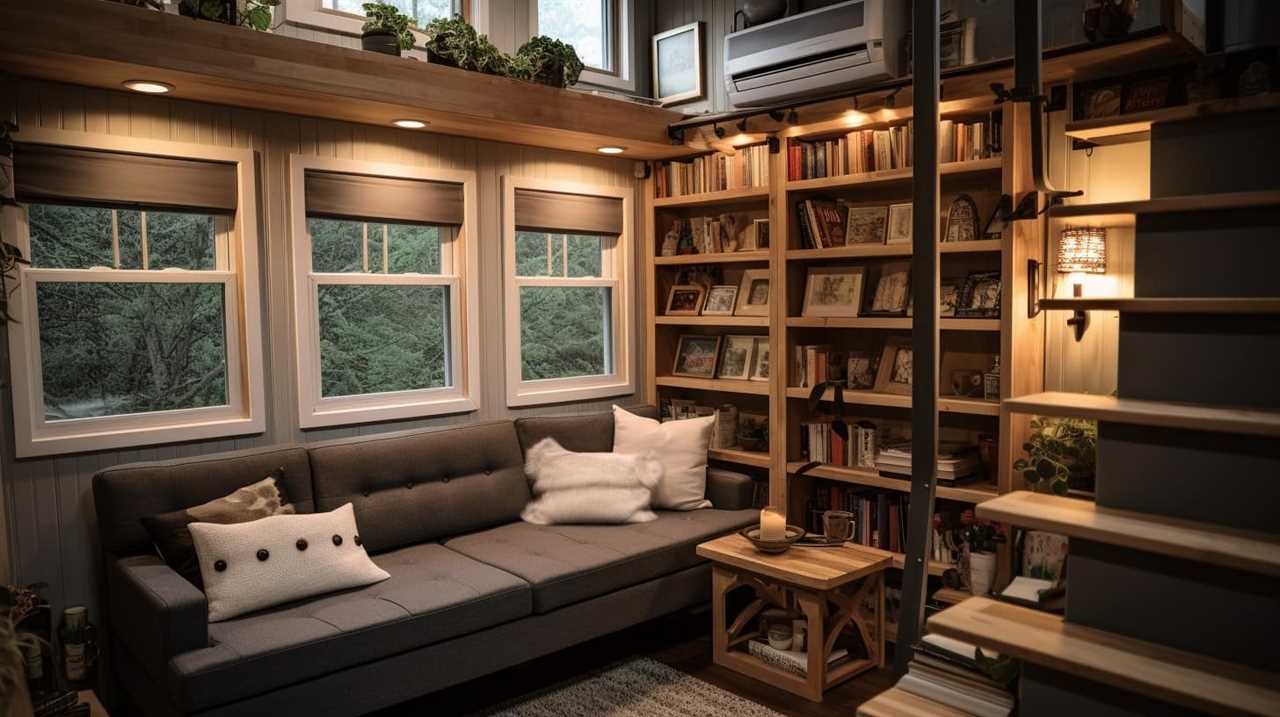
In a small living space, every inch matters, and maximizing storage capacity is key. A shallow closet depth can limit your options and make it difficult to keep your belongings organized. On the other hand, a closet that’s too deep can waste valuable space and make it challenging to access your items efficiently.
Therefore, finding the perfect balance is vital. In the next section, we’ll discuss the factors to consider when determining closet depth for tiny houses, which will help you make an informed decision for your own space.
Factors to Consider When Determining Closet Depth for Tiny Houses
When determining closet depth for tiny houses, it’s important to consider a few factors to ensure maximum functionality and efficiency. Here are three factors to consider when determining the closet depth for your tiny house:
-
Available space: Take into account the overall square footage of your tiny house and allocate the appropriate amount of space for your closet. Consider other storage needs and prioritize accordingly.
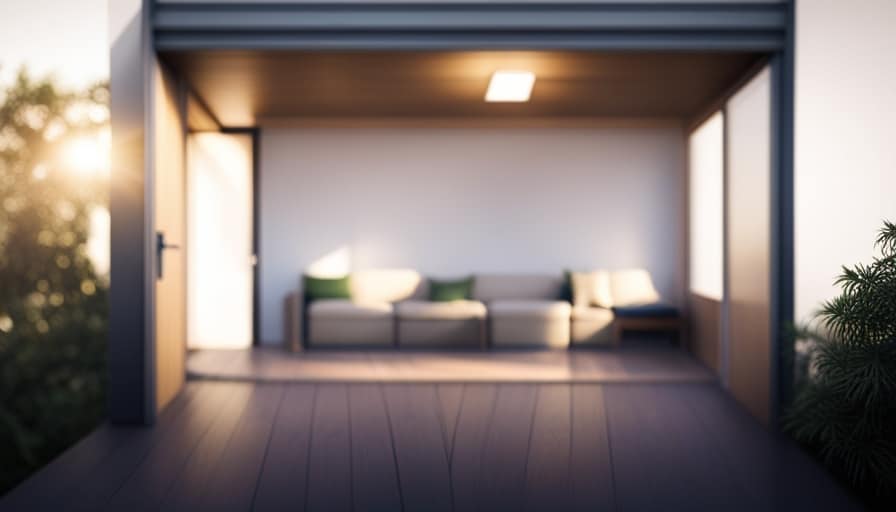
-
Clothing storage requirements: Assess your clothing collection and determine how much space you need for hanging clothes, folded items, and accessories. This will help you determine the depth needed for your closet to accommodate all your clothing storage needs.
-
Space-saving solutions: Look for innovative storage solutions that can maximize the use of your closet space. Consider using hanging organizers, shelves, and adjustable rods to make the most of the available space.
Considering these factors will help you determine the optimal closet depth for your tiny house, ensuring efficient storage solutions.
Recommended Closet Depth for Efficient Storage in Tiny Houses
To ensure efficient storage in tiny houses, a recommended closet depth is determined based on available space and storage needs. The ideal measurements for a tiny house closet can vary depending on the layout and design of the space, but generally, a depth of around 24 to 30 inches is recommended. This allows for enough space to hang clothes and store folded items without taking up too much precious square footage. Additionally, incorporating space-saving closet organization ideas can maximize the functionality of the closet. Utilizing vertical space with shelves or hanging organizers, using slim hangers, and installing hooks or racks on the closet doors can help optimize storage in a tiny house closet. By carefully considering the dimensions and implementing smart storage solutions, a tiny house closet can provide efficient storage while still maintaining a compact footprint.
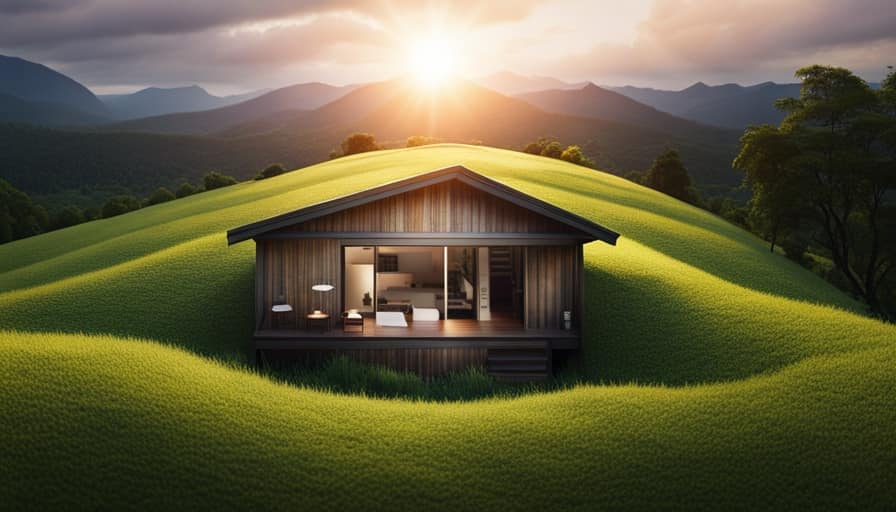
| Dimensions (inches) | Hanging Space | Shelves | Drawers |
|---|---|---|---|
| Recommended Range | 24-30 | 2-3 | 1-2 |
Creative Solutions for Maximizing Closet Depth in Tiny Houses
Maximizing closet depth in tiny houses requires thinking outside the box and exploring innovative storage solutions. When space is limited, it’s important to make the most of every inch. Here are three creative solutions for maximizing storage in tiny house closets:
-
Utilize vertical space: Install hanging rods that extend from floor to ceiling to make use of the entire height of the closet. This allows for multiple levels of hanging clothes or the addition of shelving units above the rods.
-
Install adjustable shelves: Use adjustable shelves that can be moved up or down as needed. This allows for customization based on the size and type of items being stored, ensuring efficient use of the available space.
-
Use slim hangers: Opt for slim hangers that take up less space and allow for more items to be hung in the closet. This can significantly increase the overall storage capacity.
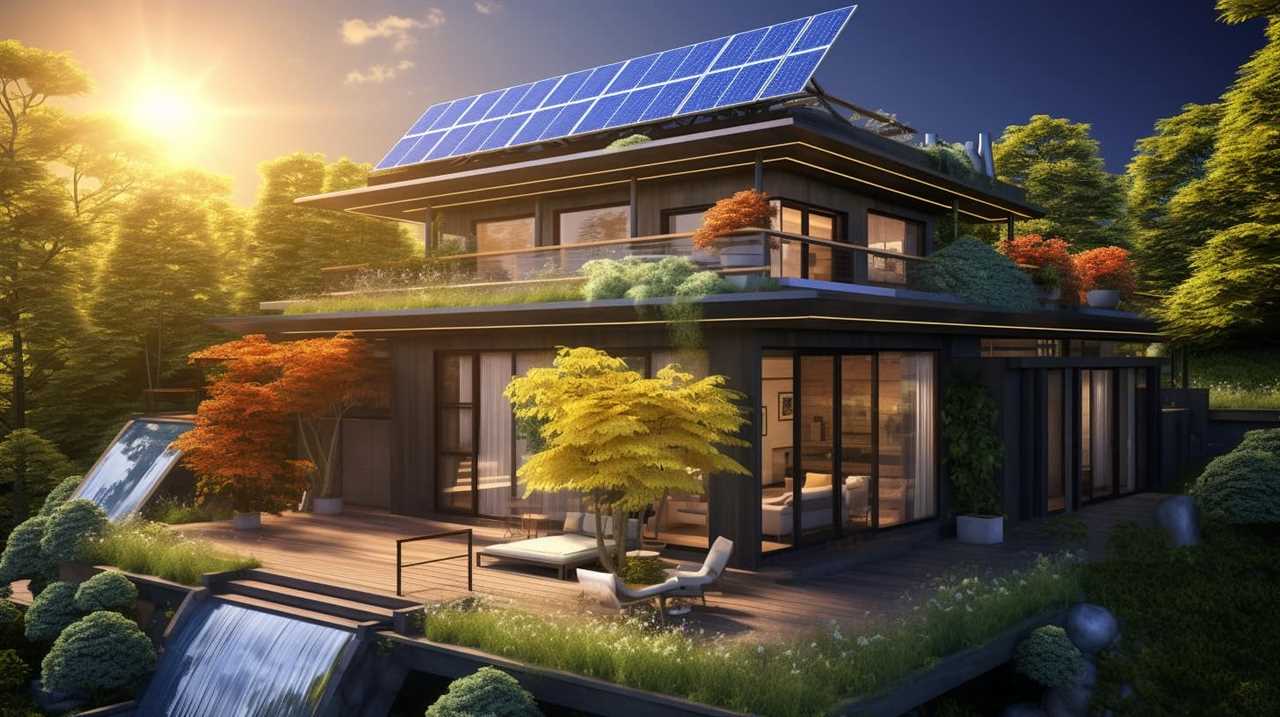
Expert Tips for Designing the Perfect Tiny House Closet
I’ve gathered some expert tips that can help you design the perfect tiny house closet. When it comes to organizing a tiny house closet, maximizing every inch of space is crucial. Here are some tips to help you make the most of your small closet:
| Tips for organizing a tiny house closet | Common mistakes to avoid when designing a tiny house closet |
|---|---|
| Utilize vertical space with shelves | Neglecting to measure the available space accurately |
| Use hanging organizers for accessories | Overcrowding the closet with unnecessary items |
| Install hooks and rods for additional storage | Ignoring the need for proper lighting in the closet |
| Sort and categorize items for easy access | Failing to consider the type and size of clothing |
| Make use of under-bed storage | Neglecting to incorporate adjustable shelving |
Frequently Asked Questions
What Are Some Alternative Storage Solutions for Tiny Houses Without a Traditional Closet?
Alternative storage solutions for tiny houses without a traditional closet include maximizing vertical space by using wall-mounted shelves, hanging organizers, and under-bed storage bins. These options allow for efficient use of limited space.
How Can I Make the Most Out of a Limited Closet Space in a Tiny House?
To maximize vertical space in a tiny house closet, I suggest using adjustable shelving and hanging organizers. Additionally, utilizing under bed storage can be a great way to store items that don’t fit in the limited closet space.
Are There Any Specific Measurements or Guidelines to Follow When Designing a Closet for a Tiny House?
When designing a closet for a tiny house, it’s important to prioritize storage space organization and maximizing vertical storage. Specific measurements and guidelines can help ensure efficient use of limited space.

What Are the Advantages of Having a Deep Closet in a Tiny House?
Having a deep closet in a tiny house offers several advantages. It allows for better organization and storage of clothing and other items, maximizing the limited closet space available.
Are There Any Specific Items or Clothing Pieces That Are Not Recommended to Be Stored in a Tiny House Closet?
Some items, like bulky winter coats or large suitcases, may not be ideal for storing in a tiny house closet. Maximizing storage in a small space requires careful consideration of what to keep.
Conclusion
In conclusion, when designing a tiny house closet, it’s crucial to consider the depth to ensure efficient storage.
According to a survey conducted among tiny house owners, it was found that the recommended closet depth for optimal organization and functionality is between 24 and 30 inches.
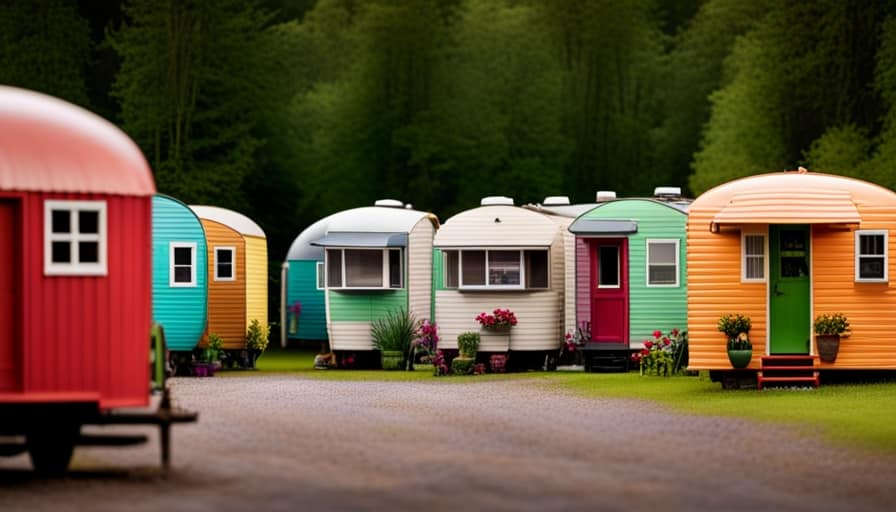
By maximizing closet depth through creative solutions such as using vertical space and utilizing adjustable shelving, tiny house dwellers can make the most out of their limited storage area.
I’m Theodore, and I love tiny houses. In fact, I’m the author of Tiny House 43, a book about tiny houses that are also tree houses. I think they’re magical places where imaginations can run wild and adventures are just waiting to happen.
While tree houses are often associated with childhood, they can be the perfect adult retreat. They offer a cozy space to relax and unwind, surrounded by nature. And since they’re typically built on stilts or raised platforms, they offer stunning views that traditional homes simply can’t match.
If you’re looking for a unique and romantic getaway, a tree house tiny house might just be the perfect option.
Beginners Guides
How Do I Get Rid of Tiny Ants in the House
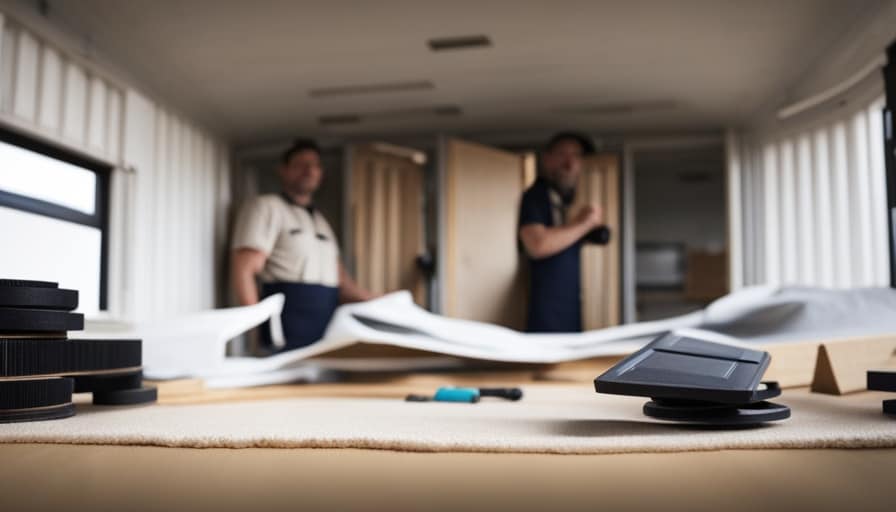
I understand the frustration of finding small ants in your home. However, do not worry, as I have the solution you are looking for.
In this article, I’ll show you exactly how to get rid of those pesky pests once and for all. We’ll explore natural remedies and effective chemical treatments, as well as ways to prevent future infestations.
Say goodbye to those tiny intruders and hello to a bug-free home!
Key Takeaways
- Signs of ant activity include trails of ants, small piles of dirt or debris, and tiny holes in wooden structures.
- Identifying the type of ant is crucial for developing an effective plan to eliminate them.
- Natural remedies such as essential oils, homemade sprays, and DIY ant traps can be used to repel and eliminate tiny ants.
- Sealing entryways, cleaning the kitchen, and removing food and water sources are effective measures for preventing future infestations.
Identifying the Type of Ants in Your House
I can start by examining the characteristics and behavior of the ants present in my house to identify their type. There are several common ant species that may invade homes, such as carpenter ants, odorous house ants, and pavement ants.
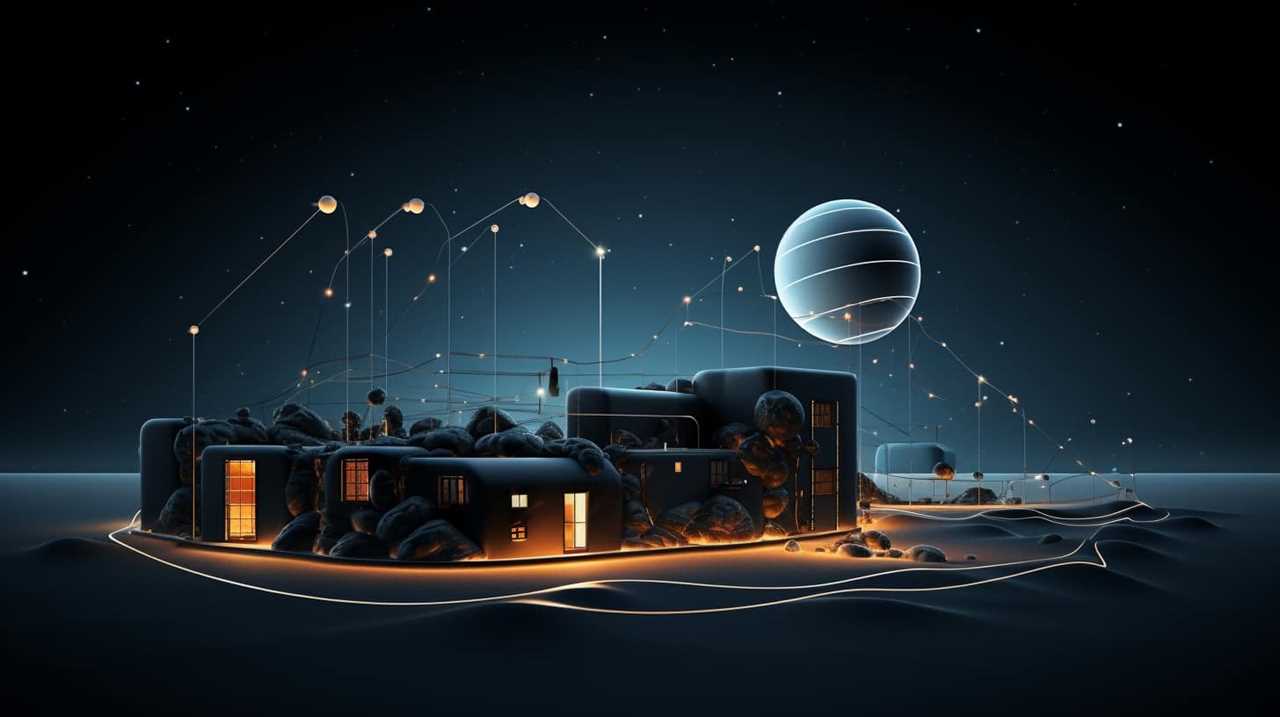
To determine which type of ant is infesting your house, look for signs of ant activity, such as trails of ants, small piles of dirt or debris, or tiny holes in wooden structures. Observing their behavior and habits can also provide valuable clues. For example, carpenter ants are known for excavating wood, while odorous house ants give off a distinct odor when crushed.
Understanding the type of ants in your house is crucial in developing an effective plan to eliminate them.
Now, let’s delve into understanding the behavior and habits of tiny ants.
Understanding the Behavior and Habits of Tiny Ants
To effectively eliminate tiny ants in the house, it’s important to understand their behavior and habits. Here are some key points to consider:
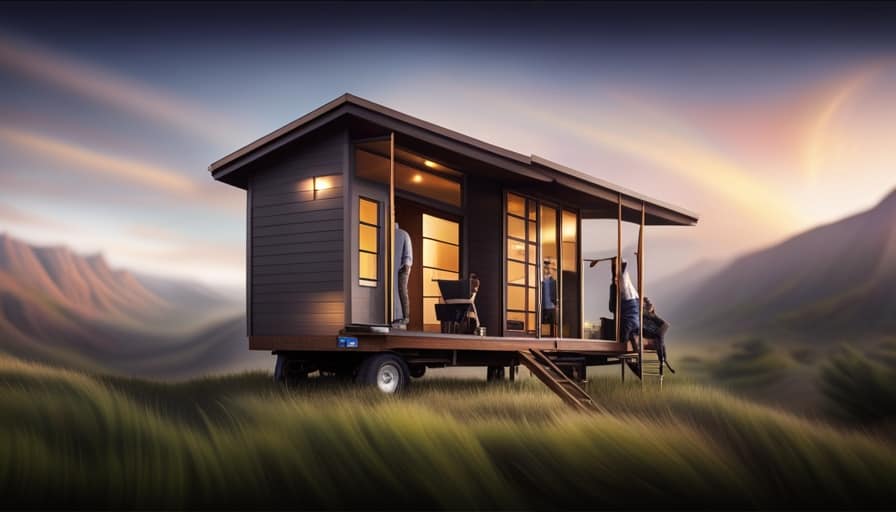
-
Ant colony communication: Tiny ants use chemical signals to communicate with each other. They leave pheromone trails to guide other ants to food sources or to communicate danger.
-
Ant foraging patterns: Tiny ants follow specific foraging patterns, usually in search of food and water. They establish trails that lead from their nests to food sources and back.
-
Nesting habits: Tiny ants often build nests in hidden areas like cracks in walls, under floors, or inside electrical outlets. Finding and eliminating these nests is crucial to eliminate the ant problem.
-
Food preferences: Tiny ants are attracted to sugary foods, crumbs, and spills. Keeping your kitchen clean and food tightly sealed can help prevent their presence.
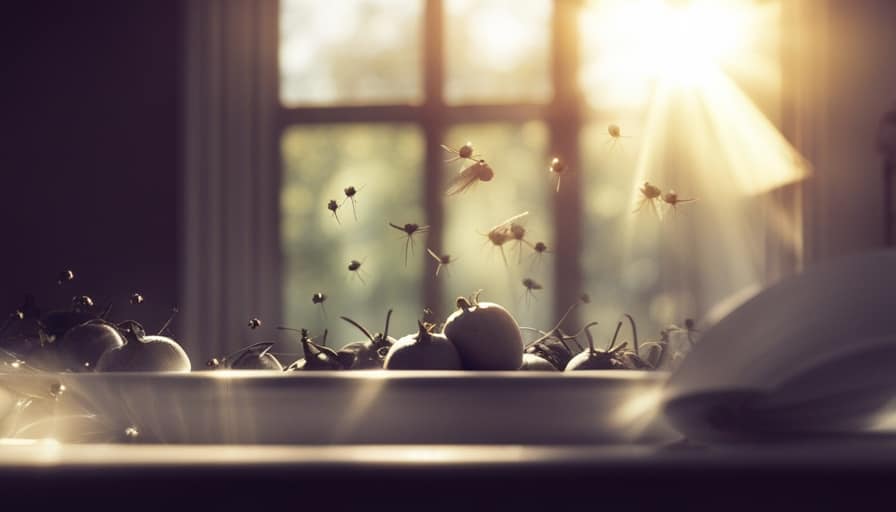
-
Reproduction and growth: Tiny ants reproduce quickly, so it’s important to act promptly when dealing with an infestation to prevent their population from growing.
Understanding these behavior and habits of tiny ants can help you develop effective strategies to get rid of them from your house.
Natural Remedies to Eliminate Tiny Ants
One effective method for eliminating tiny ants in the house is by using natural remedies. Not only are these remedies safe for you and your family, but they’re also eco-friendly.
One option is to use essential oils as ant repellents. Ants are repelled by strong scents, so you can create a homemade spray by mixing a few drops of essential oil with water and spraying it along their entry points. Peppermint, lemon, and tea tree oil are popular choices.

Another natural remedy is to make DIY ant traps using household items. You can create a simple trap by mixing equal parts of sugar and borax and placing it in a small container near the ant trail. The ants will be attracted to the sugar, but the borax will kill them.
Remember to keep these remedies out of reach of children and pets.
Effective Chemical Treatments for Tiny Ants
Using commercially available ant baits is an incredibly effective way to eliminate tiny ants in the house. These chemical treatments offer quick results and can be a convenient solution for those dealing with a persistent ant infestation. However, it’s important to consider the long-term effects of chemical treatments.
Here are some key points to keep in mind:

-
Chemical treatments vs natural remedies: While chemical treatments provide faster results, they may contain harmful ingredients that can pose risks to humans and pets. Natural remedies, on the other hand, are generally safer but may take longer to be effective.
-
Follow instructions carefully: When using chemical ant baits, it’s crucial to carefully read and follow the instructions provided. This ensures that the treatment is applied correctly and minimizes any potential risks.
-
Monitor for effectiveness: Regularly monitor the treatment’s effectiveness to ensure that it’s eliminating the ants. If the infestation persists or worsens, it may be necessary to try a different product or consult a professional pest control service.
-
Consider professional help: If the infestation is severe or persists despite using chemical treatments, it’s advisable to seek professional help. Pest control experts have access to more potent and targeted treatments that can effectively eliminate ants.
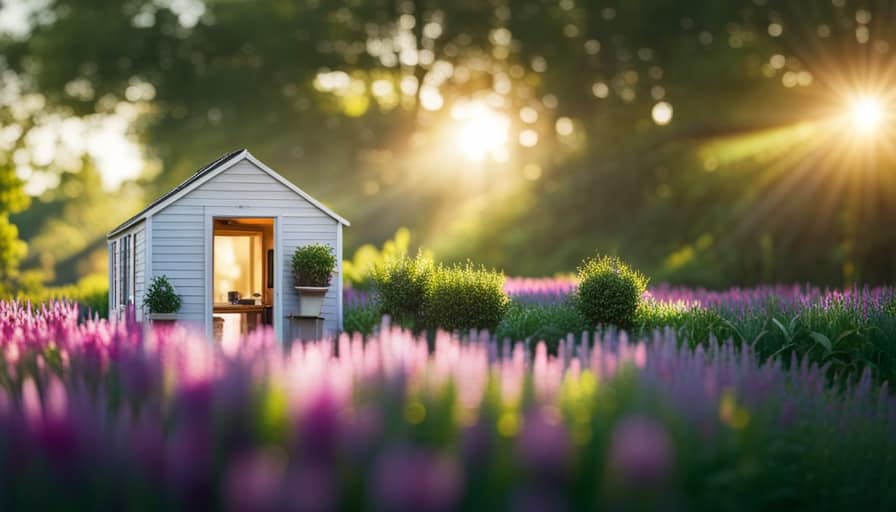
-
Safety precautions: When using chemical treatments, it’s essential to take appropriate safety precautions. Keep the products out of reach of children and pets, and avoid applying them near food preparation areas.
Preventing Future Infestations of Tiny Ants
I can take several steps to prevent future infestations of tiny ants in my house.
One important step is to prevent ant entryways into my home. I can do this by sealing any cracks or gaps in doors, windows, and walls. It’s also important to trim any tree branches or shrubs that touch my house, as these can serve as bridges for ants to enter. Additionally, I should check for and seal any openings around utility pipes and wires.
Another crucial step is to seal food sources. I should store food in airtight containers and clean up any spills or crumbs immediately. It’s also a good idea to take out the garbage regularly and keep it in a sealed container.
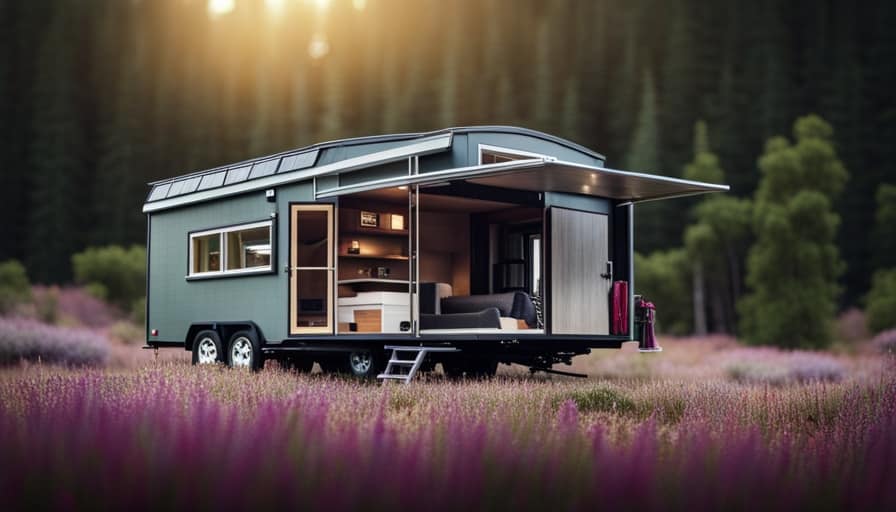
Frequently Asked Questions
Do Tiny Ants Bite or Sting?
Tiny ants can bite, but they usually don’t sting. They are more of a nuisance than a health hazard. However, they can carry diseases and prefer sugary foods.
How Long Does It Take for Natural Remedies to Eliminate Tiny Ants?
Natural remedies can take anywhere from a few days to a few weeks to effectively eliminate tiny ants. Patience is key, but rest assured, with consistency and proper application, the results will be worth it.
Can I Use Chemical Treatments for Tiny Ants if I Have Pets or Children in the House?
Yes, you can use chemical treatments for tiny ants even if you have pets or children in the house. Look for products with low toxicity and consider alternative methods for pest control as well.
Are There Any Specific Signs That Indicate a Future Infestation of Tiny Ants?
Warning signs of a future ant infestation include seeing trails of ants, finding ant nests or mounds, and noticing an increase in ant activity. Prevention methods like keeping a clean house and sealing entry points can help avoid infestations.
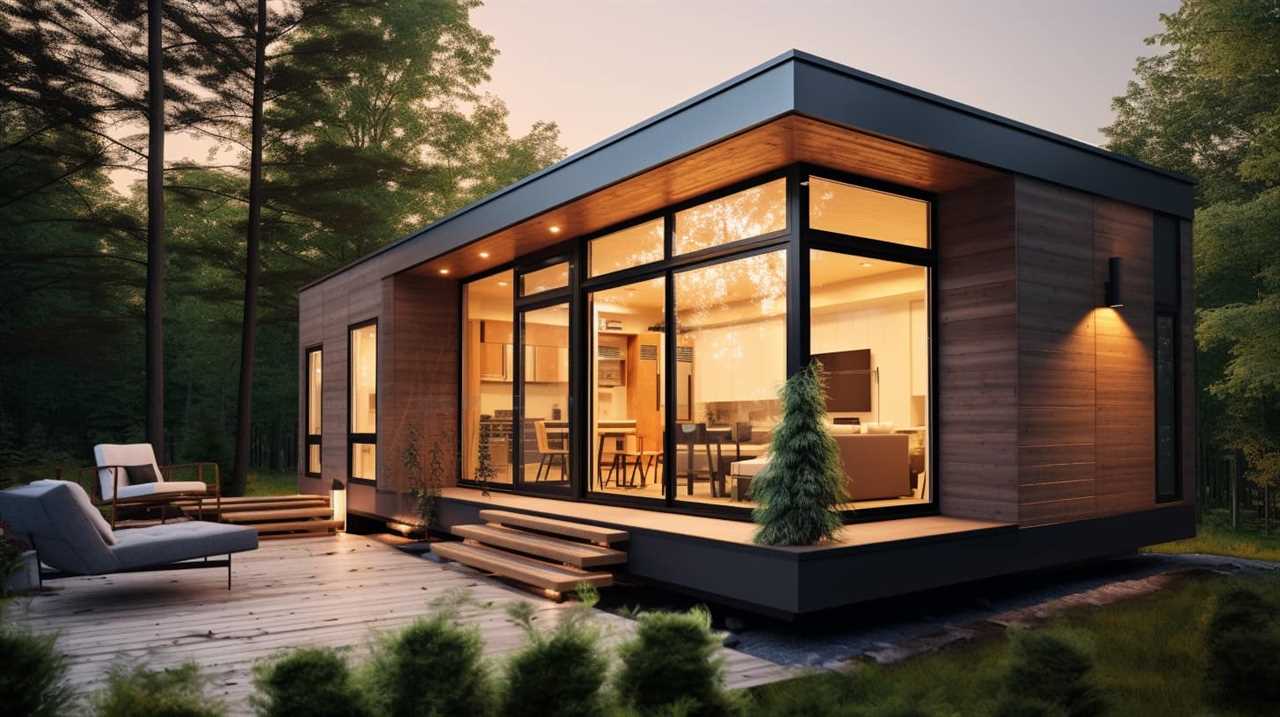
Can Tiny Ants Cause Damage to My House or Belongings?
Tiny ants, although small, can cause damage to your house and belongings. To prevent infestations, keep your home clean, seal any cracks or openings, and store food properly.
Conclusion
In conclusion, don’t let those pesky tiny ants drive you up the wall!
By identifying the type of ants in your house, understanding their behavior, and using natural remedies or effective chemical treatments, you can eliminate them.
Remember, prevention is key, so take steps to keep future infestations at bay.
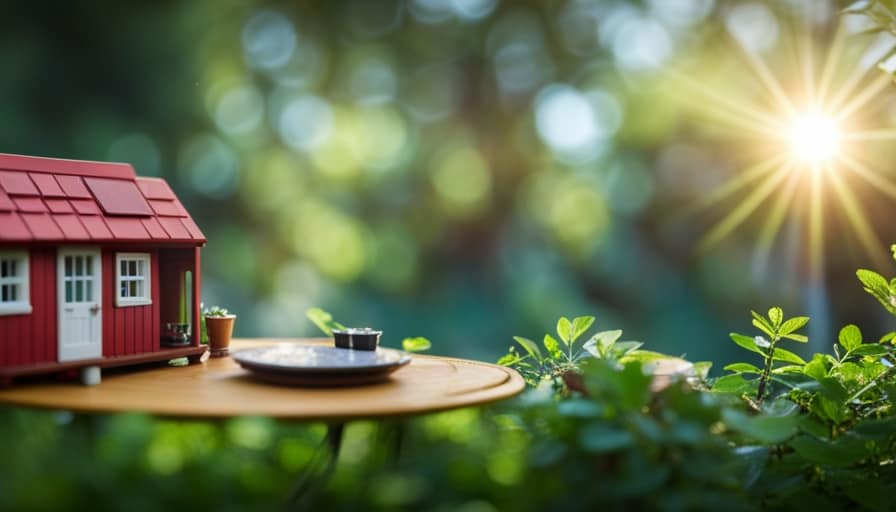
Don’t let these tiny intruders rain on your parade – take action and reclaim your ant-free home!
I’m Theodore, and I love tiny houses. In fact, I’m the author of Tiny House 43, a book about tiny houses that are also tree houses. I think they’re magical places where imaginations can run wild and adventures are just waiting to happen.
While tree houses are often associated with childhood, they can be the perfect adult retreat. They offer a cozy space to relax and unwind, surrounded by nature. And since they’re typically built on stilts or raised platforms, they offer stunning views that traditional homes simply can’t match.
If you’re looking for a unique and romantic getaway, a tree house tiny house might just be the perfect option.
-

 Beginners Guides2 weeks ago
Beginners Guides2 weeks agoHow To Buy A Tesla Tiny House
-

 Energy Efficiency2 months ago
Energy Efficiency2 months agoBest Tiny Homes For Cold Climates
-

 Beginners Guides1 week ago
Beginners Guides1 week agoTiny House Nation Where Are They Now Stephanie
-

 Tiny House Resources (e.g., legalities, cost, insurance, FAQs)2 months ago
Tiny House Resources (e.g., legalities, cost, insurance, FAQs)2 months agoDo Tiny Homes Need Planning Permission?
-

 Beginners Guides3 weeks ago
Beginners Guides3 weeks agoFrom The Show Tiny House Nation How Many Keep Their Tiny House?
-

 Beginners Guides2 months ago
Beginners Guides2 months agoUsing a Climbing Net For Treehouse Construction
-

 Beginners Guides2 months ago
Beginners Guides2 months agoHow to Build a Treehouse Without Drilling Into the Tree
-

 Beginners Guides3 weeks ago
Beginners Guides3 weeks agoTiny House Nation Who Pays For The Houses




